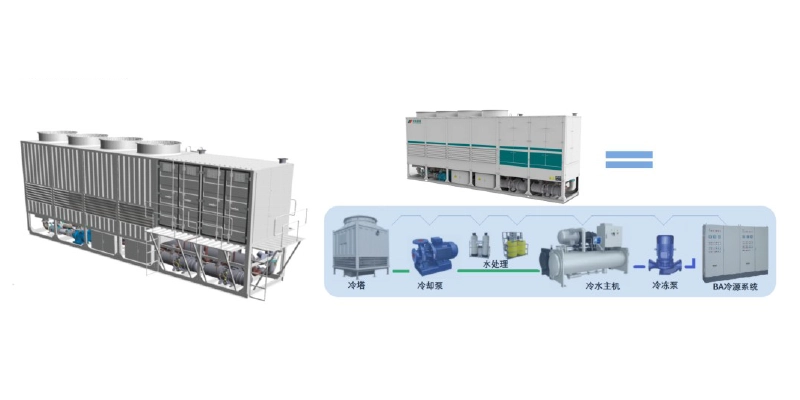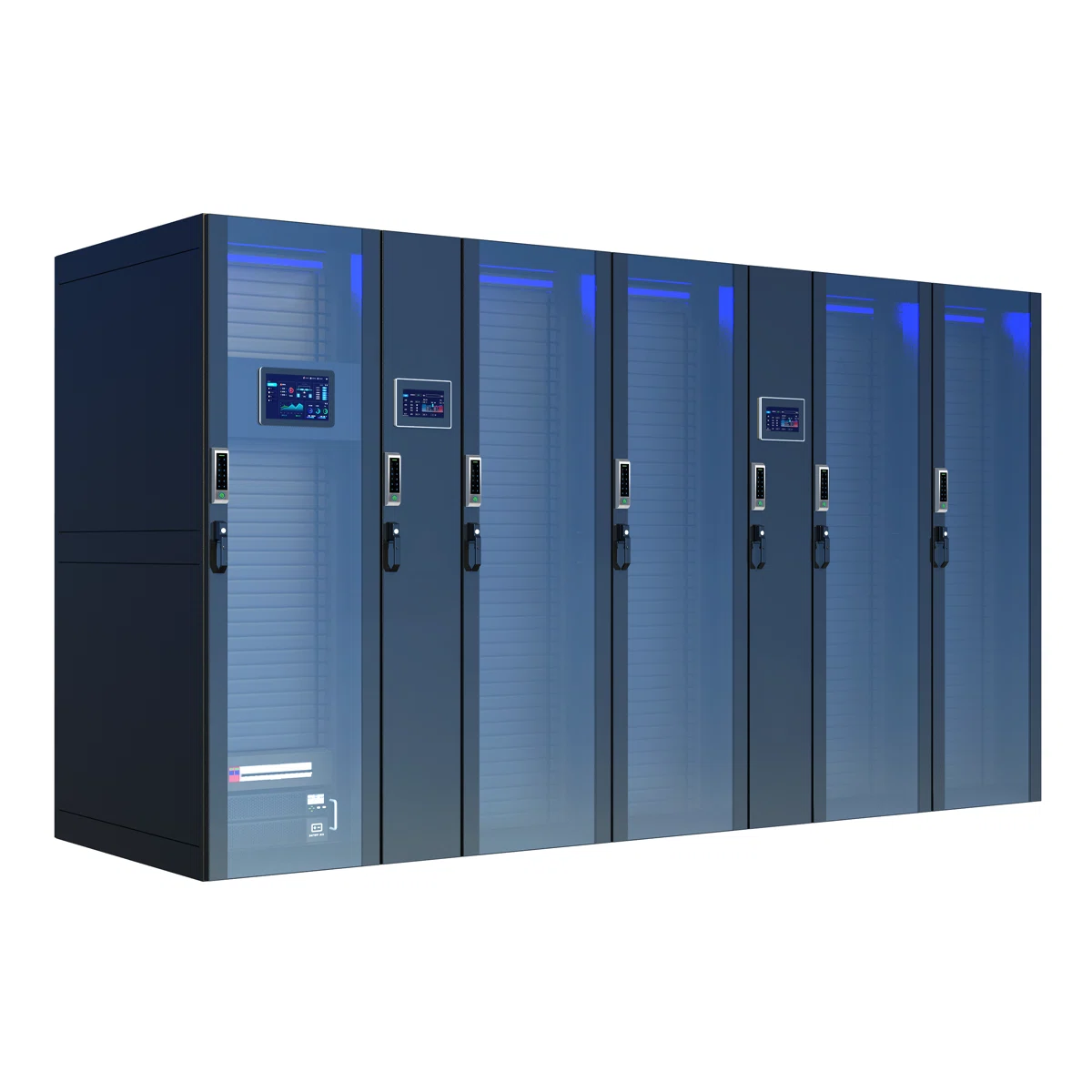6 ключевых моментов при внедрении жидкостного охлаждения в центрах обработки данных
Release time: 2025-10-23
As data centers continue to grow in scale and complexity, traditional air-based cooling systems are often no longer sufficient to handle the increasing heat output of high-performance servers. This has led to a significant rise in the adoption of liquid cooling technologies. Liquid cooling offers a highly efficient and effective solution to managing the heat generated by modern, high-density IT equipment. However, successfully implementing liquid cooling requires careful planning and consideration.
In this article, we’ll discuss the six key considerations when introducing liquid cooling in data centers. Understanding these factors will ensure that you make informed decisions that align with your goals for efficiency, safety, and cost-effectiveness.
1. Clear Cooling Objectives and Application Requirements
The first step in introducing liquid cooling is to clearly define your cooling objectives and application requirements. What are you trying to achieve with liquid cooling? Are you seeking to improve cooling efficiency, support higher-density equipment, or reduce energy consumption?
Here are a few critical aspects to consider:
- Heat Density: High-density servers, such as GPUs and AI hardware, generate substantial amounts of heat. Liquid cooling is ideal for these types of workloads.
- Energy Efficiency Goals: Liquid cooling can reduce energy consumption significantly when compared to traditional air-cooling systems. If sustainability is a priority, liquid cooling can support your green initiatives.
- Cooling Capacity: Define how much heat needs to be dissipated. This will help determine the scale and type of liquid cooling system you need.
Clear objectives will guide your technology selection and implementation strategy, ensuring that you choose the best solution to meet your data center’s specific needs.
2. Choosing the Right Liquid Cooling Technology
Once you’ve identified your cooling goals, the next step is selecting the right технология жидкостного охлаждения. There are several approaches to liquid cooling, and each offers unique benefits depending on your application.
2.1. Direct-to-Chip (D2C) Cooling
This method involves circulating coolant directly to the hot components of servers (such as CPUs or GPUs). It is ideal for high-performance computing and high-density environments where cooling efficiency is paramount.
Pros:
- High cooling efficiency due to direct contact with heat-generating components.
- Reduces the need for high airflow, saving energy.
Cons:
- More complex installation process.
- Requires specialized hardware.
2.2. Immersion Cooling
In immersion cooling, servers or components are submerged in a non-conductive liquid. This technology is gaining traction in data centers that require extreme cooling.
Pros:
- Extremely efficient at handling large heat loads.
- Reduces physical space requirements since servers can be stacked more densely.
Cons:
- Higher initial setup costs.
- Potential for operational challenges with liquid handling and maintenance.
2.3. Rear Door Heat Exchangers
A more traditional but effective method is the rear door heat exchanger, where a heat exchanger is attached to the back of the server rack, circulating coolant to remove heat from the exhaust air.
Pros:
- Relatively easy to install in existing data centers.
- Lower risk of liquid spills compared to immersion cooling.
Cons:
- May not handle extremely high-density racks as efficiently as direct-to-chip or immersion cooling.
Selecting the right technology depends on factors like heat density, space availability, and your long-term operational goals.
3. Compatibility with Existing Infrastructure
Introducing жидкостное охлаждение into an existing data center involves considering how well the new system will integrate with your current infrastructure. Whether you are upgrading an existing facility or building a new one, ensuring compatibility is critical to the success of the project.
3.1. Space and Layout Considerations
Liquid cooling systems, especially immersion and direct-to-chip systems, may require specialized hardware or infrastructure changes. Evaluate whether your current space can accommodate the necessary equipment, such as coolant pumps, heat exchangers, and tanks.
3.2. Integration with Current Cooling Systems
In many cases, liquid cooling systems are introduced as part of a hybrid approach alongside traditional air-based systems. Ensure that both systems can work in tandem to optimize cooling performance and prevent inefficiencies.
3.3. Power Supply and Plumbing
Liquid cooling systems often require more robust plumbing and electrical systems. Check that your existing infrastructure can support the added demands, such as a stable power supply and adequate plumbing for coolant delivery.
Compatibility with your existing infrastructure will ensure a smoother implementation and reduce the risk of disruption during the transition.
4. Coolant Selection and Safety
Choosing the right coolant is an essential aspect of liquid cooling. The coolant must be non-conductive, safe for use in electronic equipment, and have excellent heat transfer properties.
4.1. Types of Coolants
There are several types of coolants used in data center liquid cooling systems, including:
- Water-based coolants: The most common and cost-effective. However, water can be corrosive and may cause damage if leaks occur.
- Fluorocarbons: These are synthetic liquids with better insulating properties, but they tend to be more expensive and environmentally challenging.
- Oil-based coolants: These are often used in immersion cooling and offer excellent heat transfer, but they are more difficult to manage.
4.2. Safety and Environmental Considerations
It’s crucial to select a coolant that is both safe to handle and compatible with the environment. Ensure that the coolant is environmentally friendly and that any potential risks, such as leaks or spills, are minimized. Having spillage containment protocols and proper safety measures is key to maintaining a safe operational environment.
5. Operations and Monitoring Systems
Once the система жидкостного охлаждения is installed, effective monitoring and management are essential to ensure that it operates efficiently over time. Proper monitoring of coolant levels, temperatures, and system pressures can prevent issues such as overheating or equipment failure.
5.1. Real-time Monitoring
Installing sensors to monitor various parameters such as coolant temperature, flow rate, and pressure will provide real-time data, allowing for quick response to any anomalies.
5.2. Maintenance Schedules
Liquid cooling systems require regular maintenance to keep coolant circulating effectively and to prevent contaminants from affecting performance. Establish a maintenance schedule that includes routine checks for leaks, coolant replacement, and performance evaluation.
5.3. Automated Control Systems
Advanced control systems can adjust cooling levels based on real-time data, optimizing energy consumption and ensuring efficient cooling across the entire data center.
6. Cost and Return on Investment (ROI) Analysis
Cost analysis and calculating the return on investment (ROI) are crucial to determine whether liquid cooling is a financially viable option for your data center.
6.1. Initial Costs
The upfront cost of liquid cooling systems can be higher than traditional air-based solutions due to the need for specialized hardware, installation, and infrastructure upgrades.
6.2. Operating Costs
However, the operating costs of liquid cooling can be significantly lower. Liquid cooling offers energy efficiency benefits, as it requires less energy to cool high-density racks. Over time, these savings can offset the initial investment.
6.3. ROI Calculation
Calculate the expected ROI by considering:
- Energy savings
- Reduced maintenance costs
- Increased uptime and system reliability
- Potential scalability for future needs
In many cases, the long-term savings from energy efficiency and reduced cooling-related failures will result in a strong ROI for your liquid cooling system.
Заключение
Introducing liquid cooling into a data center is a powerful solution to address the increasing cooling demands of modern IT infrastructure. By carefully considering the six key factors—cooling objectives, technology selection, infrastructure compatibility, coolant safety, operational systems, and ROI analysis—you can make an informed decision that maximizes the efficiency, reliability, and cost-effectiveness of your data center’s cooling system.
As data center workloads continue to grow and evolve, liquid cooling technologies will become an essential tool for meeting the demands of high-performance computing and ensuring sustainable, long-term operations.


